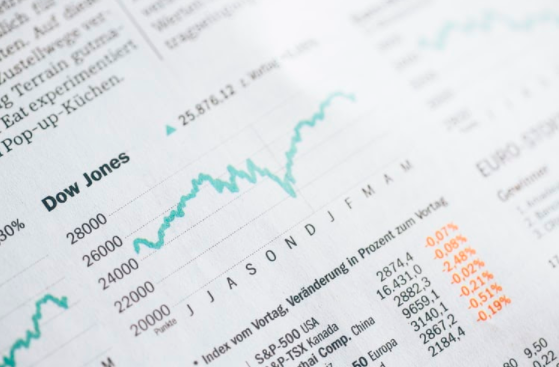Real estate investors have a lot on their plates every day. It is ideal to be organized to save time and invest more effort to more important tasks. Using a spreadsheet to organize your data will drive a more productive workday and will greatly aid in keeping track of your investment, income, and other financial information.
Gus Dahleh, a real estate magnate, is a businessman who creates a spreadsheet cohesive to his daily transactions to maintain order to his finances. It helps measure his total monthly profit and see details of where the money was spent and what money goes out and goes in. According to Gus, this behavior has greatly influenced his journey to creating many successful investments and acquiring over $50 million in commercial real estate since 2010.
If you want to learn how Gus Dahleh does it, here is a step-by-step guide in creating your spreadsheet for rental properties.
Step 1: Determine and Relay Important Information
Information that concerns your rental property is the building block for future calculations. It is best to have all of your property information readily available and easily accessible to save time from having to look for it when needed.
It is also important to ensure that the navigation of this data is easy. Thus, it is wise to label your data correctly and place it in separate sections to avoid chaos. Here is a basic list of property information to jot down on your spreadsheet.
Basic Information
- Property Address
- Type of Property ( Residential/Commercial)
- Size of Property
Loan Information
In addition, if the property was purchased through financial assistance, it is ideal to put loan information and other vital data that goes along with it. You can put it on a separate sheet on the spreadsheet and label it accordingly. The details enclosed in this section are:
- Loan Amount
- Monthly Payment
- Interest Rate
- Loan Terms and Conditions
- Amortization Period
Initial Investment Data
Lastly, initial investment data is the section where you encode how much you paid for the property when you first bought it. All the financial information from the downpayment down to closing costs and repairs or renovations must be included.
Here is the list of Gus Dahleh’s initial information:
- Purchase Price
- Closing Cost Amount
- Renovations or Repair Cost
- Total Initial Investment

Step 2: Income and Expenses
Your monthly income and expenses are vital pieces of information when it comes to assessing your monthly finances. Have an in-depth look at your expenses and how much you make monthly from the property. Place it in a separate sheet and label it accordingly. Having this information on hand will help you determine whether or not you are losing money, breaking even, or gaining profit.
Total Monthly Income
This section will cover all the money you accumulate monthly. The rental money is one thing, but also, it is essential to include your other sources of income in this section. Calculate your income monthly and annually to clearly see if you’re actually making or losing money. This section is broken down to these subsections:
- Total Number of Rental Units
- Average Rent Per Unit (Use a comparative market analysis)
- Potential Rent Income (Total income at full tenant capacity)
- Projected Vacancy Rate (Use current national figure)
- Projected Vacancy Loss (Total projected rental income multiplied by vacancy rate)
- Gross Rental Income (Potential rental income minus projected vacancy loss)
- Additional Income ( Money coming in from other sources)
- Gross Operating Income (Gross rental income plus additional income)
Total Monthly Operating Expenses
It is crucial not to leave out anything when recording your monthly expenses or bills. Even the slightest amount spent on your property needs to be projected and counted. Gus Dahleh is very meticulous when it comes to calculating his monthly expenses on his commercial rental properties. He makes sure that everything is accounted for to keep his records accurate.
Every expense is unique but here are the most common monthly expense for rental properties:
- Property Tax Rate
- Property Management Fees
- Leasing Fees
- Utility Bills
- Replacement Reserve Cost
- Pest Control Expense
- Accounting and Legal Cost
- Advertising Fees

Step 3: Rate of Returns Calculation
The last part of your spreadsheet organization is dedicated to calculating your return rates. Rate-of-return calculation in rental property investment projects the amount of profit you earn throughout the course of one month, six months, or a year. Each calculation must be projected in separate sections. Gus Dahleh, as a renowned investor, also is particular in keeping records of his own income. This methodology allows him to see if it was all worth the effort or if there is something wrong with his operation. Here is the list of information included in this section.
Net Operating Income
Net operating income (NOI) is an essential part of measuring your earnings. It shows the amount you gained and the amount you spent at a given time. Net operating income is assessed by subtracting your all operating expenses from your gross profit.
Formula: Gross Operating Income (GOI) – Operating Expenses = NOI
Capitalization Rate
Capitalization Rate or “Cap Rate” is the equation that determines the potential profitability of the investment. Gus Dahleh will typically look at a property’s income and compare it to the current value of the property. If the current property value is either depreciating or appreciating, this action will help you determine the cap rate.
Formula: NOI/Property Value = Capitalization Rate
Cash-on-Cash Return
Cash-on-cash return is an important factor that measures your total annual return earned from your investments in contrast to the cost of the mortgage you paid for. It is basically determining the total amount of cash you invested in the rental property and the total profit you earned.
Formula: Pre-Tax Cash Inflow / Total Cash Invested = Cash-on-Cash Return
Real estate investors keep a keen eye on the finances of property investment. It is significant in making important decisions and forecasting possible problems and losses. Gus Dahleh is a wise property investor that ensures all cashflow is recorded and accounted for. These tips from Gus Dahleh can be of great aid in knowing what certain courses of action to consider for future investments.
About Gus Dahleh
Gus Dahleh is a business tycoon that made countless successful property investments. His experience and knowledge in commercial property development made him one of the most reputable and credible real estate investors of this generation.
Gus Dahleh’s proven reputation and cunning wit in the industry made him the market leader of the real estate industry. He is an impeccable man with impeccable intelligence. Visit Gus-Dahleh.com or GusDahlehBlog.com to find out more about him and his work.
Learn more about Gus Dahleh here:

